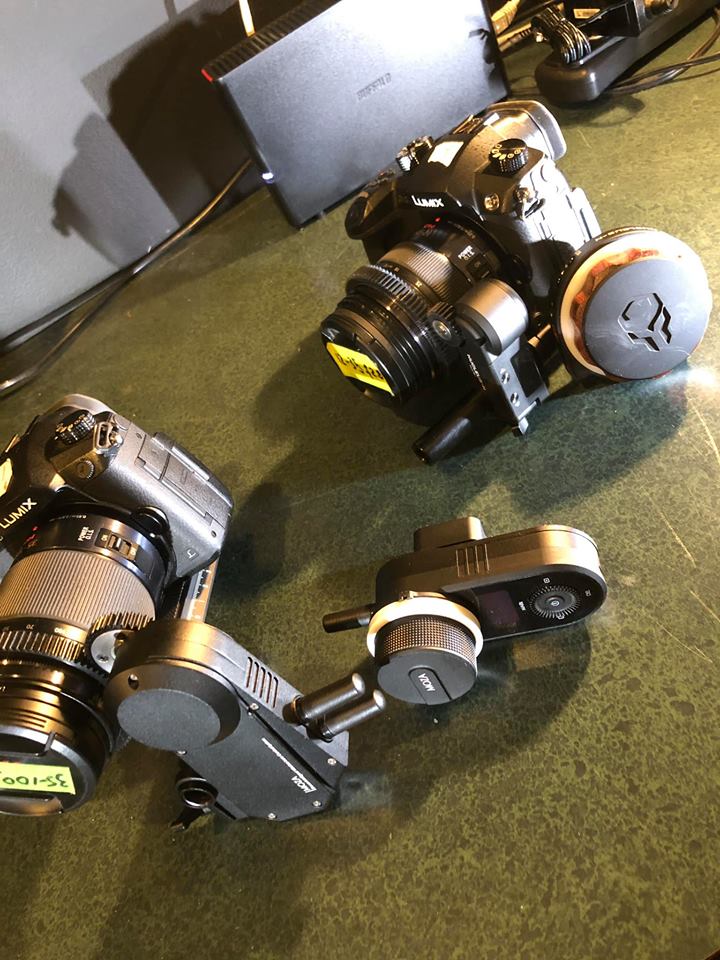Wireless Follow Focus System
So i get to play with both under $300 wireless follow focus, and this is just my observation after playing with it in a day… At end of this video got two videos to check it out.
Moza iFocus Kit or Tilta’s Nucleus Nano
This is a very hard to decide, as both are almost equally good, here’s just a few observations:
– Build quality
o Both are made with metal
o Both got an led screen
o Tilta’s screen on the wheel is extremely tiny, so unless you have a magnifying glass, you will not be able to read, this is something their tech support is award of and at this time, there’s no way to adjust
o iFocus’ hand unit got a decent sized screen, but it’s packed with so much information, it gets a bit confusing to figure out
o size wise, overall, both would be equal: iFocus is bigger than Tilta’s Motor, but iFocus’ hand unit is small than the Tilta’s wheel
– Setup
o TIlta’s come with a baseplate with rod attachment, this is a great way to use that for any environment.
o iFocus’ baseplate is from the Air 2 gimbal, if Gudsen Moza willing to sell these quick release plates with the rod attachment separately then it would be cool. But you can also buy Tilta’s baseplate to use it anyway.
o Both are easy to setup on camera, I particularly like how Tilta’s rod securing mechanizing, so the rod will never move, unlike iFocus’ that if you didn’t turn tight enough, it can come loose (not quite often though).
o What I didn’t like about Tilta’s setup, it uses L wrench which is prompt to lose it if you don’t take care of it. It comes with 3 sizes… so you have to use each to attach… Not ideal. iFocus uses wrench knob, which I like for securing, just not the rod part.
o Calibration:
Tilta definitely has the easiest! Set
it up, turn both motor and wheel on, hold down cal button for 3-4
seconds, and it will auto calibrate for you. (for those fly-by-wire
lenses, you will have to do manual calibration).
iFocus
calibration is a bit more ‘steps’: 1. You turn the hand unit to one side
and turn the lens to one set, to set the point, then you turn the hand
unit and the lens to the other side to set the 2nd point and then you
are set. So basically an universal way to do all lenses no matter it’s
regular, quasi-cine-style or fly-by-wire type.
o Power:
iFocus and it’s hand unit both contain rechargeable battery to about 24hrs. so you don’t have to carry additional power bank.
Tital’s motor unit requires external power, so you will need a 5v 2.1 power bank to start with, if you need more voltage to go into the motor unit, you will need to use P-Tap batteries, so basically, it has 5v to 18v power regulation, the higher voltage, the less delays there is. So yes, there IS a delay
IFocus’ internal battery is powerful enough that can move any lens… So far
o Other features:
Tital’s Nano only have A and B set point, HOWEVER, if you plan to use with other Tilta’s products or gimbal like the Ronin-S or their own, then you can have control. With additional cable, you can control stop and start recording with various DSLR/Mirrorless Cameras (GH5/Sony etc.) and you can control this through the Tilta’s wheel
iFocus kit, in addition to be able to set A and B points, you can also program up to 3 customs settings so iFocus can easily play back the settings and rack for you automatically and always correct.
o Distance: Both claimed to have over 300ft range, I have yet to test that part out
Conclusion:
Which to get will depends on your needs, if you have previous Tilta’s products, stick with it. If you have the Air 2 gimbal, just get the iFocus and the Hand Unit, so you can take advantage of the gimbal’s wheel attachment and offers precision racking without delays. If you do want to buy a wireless follow focus system, you can’t go wrong with either. Personally, I would prefer iFocus now that I’ve played with both a bit more.

Sorry, the comment form is closed at this time.